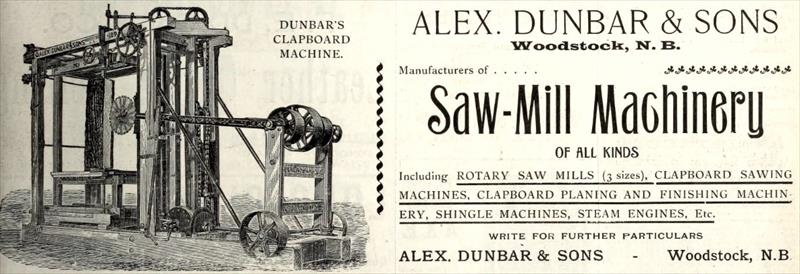In the early part of the 20th century Alex. Dunbar & Sons Co., Ltd. made steam engines and sawmill machinery. Of particular note is a shingle machine patented by Alex Dunbar and manufactured for a time by his firm. It was subsequently manufactured by McFarlane, Thompson & Anderson Manufacturing Co., Ltd., and there was also an unlicensed version from the Maritime Foundry & Machine Works. The Dunbar shingle machine was widely used in the British Columbia shingle-milling industry, which in 1901 got a big boost when the export of whole cedar logs was no longer permitted. Shingle mills rapidly became big business in BC, which led to a series of improvements to the Dunbar design from BC manufacturers such as Schaake Machine Works and Letson & Burpee.
 |
| From July 1900 The Canada Lumberman |
Information Sources
- November 1902 The Canada Lumberman. "Extensive factory additions have been commenced by Alex. Dunbar & Sons, of Woodstock, N. B., It is proposed to build new machine shop, blacksmith shop and foundry, and to convert the old machine shop into a wood-working factory. The new machine shop will be equipped with a 75 horse power engine of their own manufacture. The firm have orders on hand for 44 shingle machines. It is understand to be their intention to make some new lines of saw mill machinery including stock gang saws, and a new shingle machine especially adapted to the large timber of British Columbia.
- The 1981 paper, The Shingle Sawing Machine in British Columbia 1901 to 1925, by Robert Griffin of the British Columbia Provincial Museum, is a mandatory read for anyone interested in the history of shingle machines in Canada. This paper provided much of the information here, and it is especially useful in its providing connections between the various shingle mill designs.